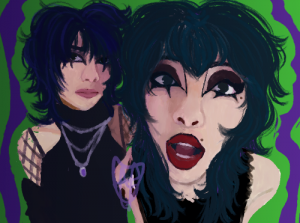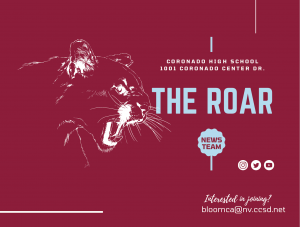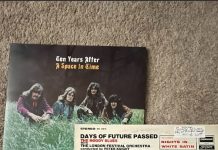
by Talia Medina
Throughout the years, media has portrayed alternative people in a multitude of ways, but the most prominent one is an “outcast” who is constantly made fun of by the other students. In the end, they are “saved” when they get a makeover and their appearance is deemed “socially acceptable” and everything suddenly goes right for them. However, what the media does not understand is that the major point of these subcultures is to not care about what people think.
The punk and goth subcultures have been around since the 70s, but a lot of misinformation has been spread about them since media portrays people part of these subcultures as mean or too gloomy to even talk to. This causes a widespread belief that people who dress alternatively are “weird” which leads other people to believe that they’re an easier group to be bullied.
In reality, alternative people are typically very confident and use it as a way to not only express their style, but to also express other things like their political beliefs. However, ever since being “alternative” has become trendy, it’s become difficult for many people, including teens that follow these subcultures, to be able to comfortably express themselves to the fullest. The most well-known subcultures are punk and goth, but within each, there are even smaller branches such as grunge, scene, and emo.
Punk rock, often known simply as punk, started in the mid-1970s and was most prominent in the United States and the United Kingdom. Punks were known for their short, fast-paced songs that had a loud and aggressive style of singing and were usually about political and anti-establishment views. Many punks liked to make their own clothing and even in the music industry, they would self-produce recordings and distribute them through their own independent labels.
Goth, on the other hand, was a subculture that started around the late-1970s and early 1980s. Goth stemmed from a genre of punk music called post-punk and gothic rock, which is how goth got its name. Post-punk artists who were beginning to help develop and shape the subculture included bands such as Siouxsie and the Banshees, Bauhaus, The Cure, and Joy Division. The subculture has survived the longest, and its imagery was heavily influenced by 19th-century gothic literature and horror films. Goth mostly focuses on music and fashion, but still has some punk aspects to it like the heavily teased hair, large platform boots, and pins and patches on their jackets.
The media and teenagers that are perceived to be “popular” or follow the latest trends tend to target students that dress “weirdly.” This happens when other students tease them by making comments about the way they dress or asking them insensitive questions since much of the media portrays them as depressed. Asking if “there’s something wrong with them”, can also get incredibly irritating to deal with. Sometimes students even go as far as to take photos of other students without their permission and post them on social media to share with their friends how “strange” they look. In the end, it just goes to show how teenagers feel the need to make fun of people that aren’t following trends so that they can continue to be accepted by their peers and not judged.
The alternative subcultures continue to thrive as the years go by, and even though a lot of media portrays alternative people as “weird”, it doesn’t mean that they actually are. People, teenagers especially, that don’t follow any of the subcultures should learn that if it’s different from what’s trending or their “normal” doesn’t mean that it’s bad. They should just leave the subcultural people to enjoy themselves to the fullest.











